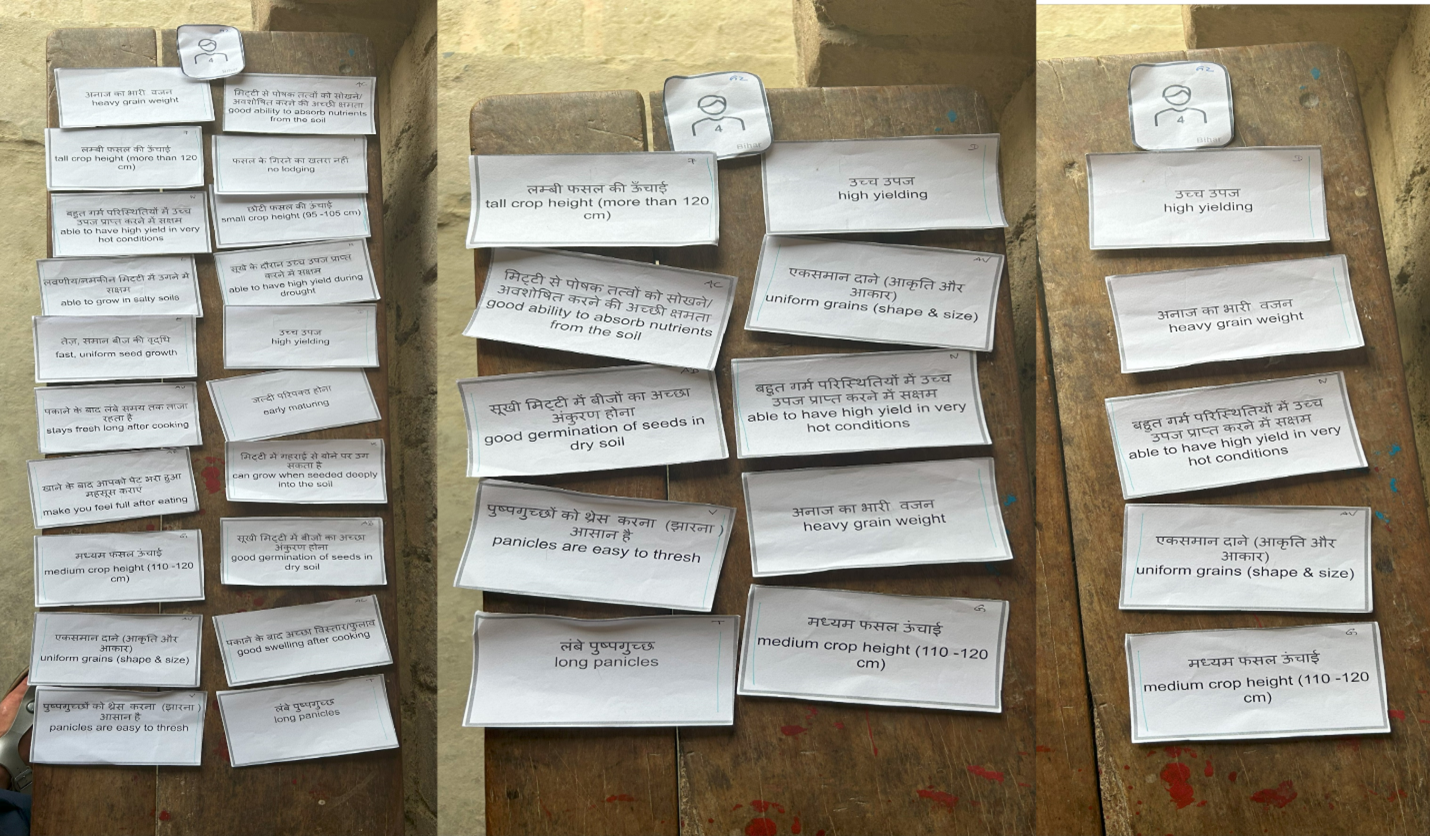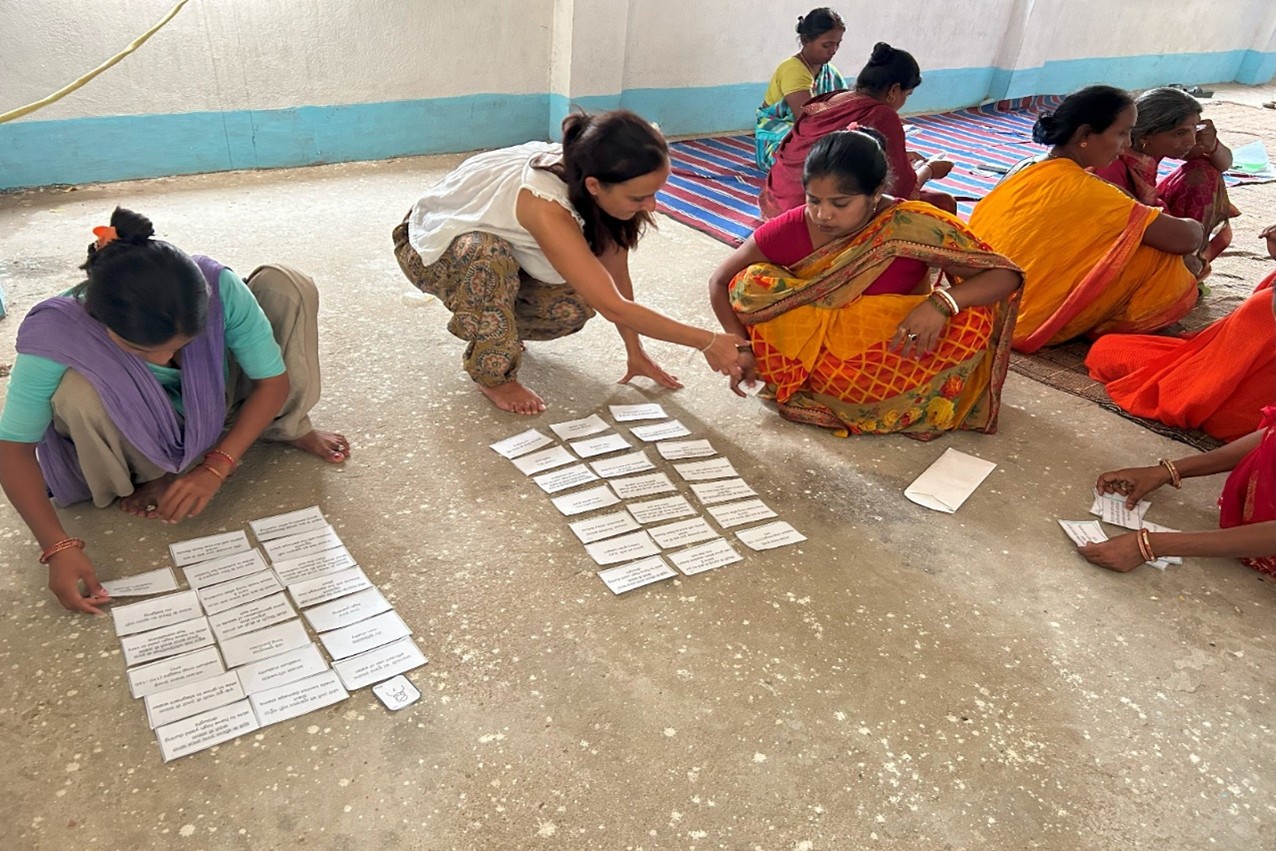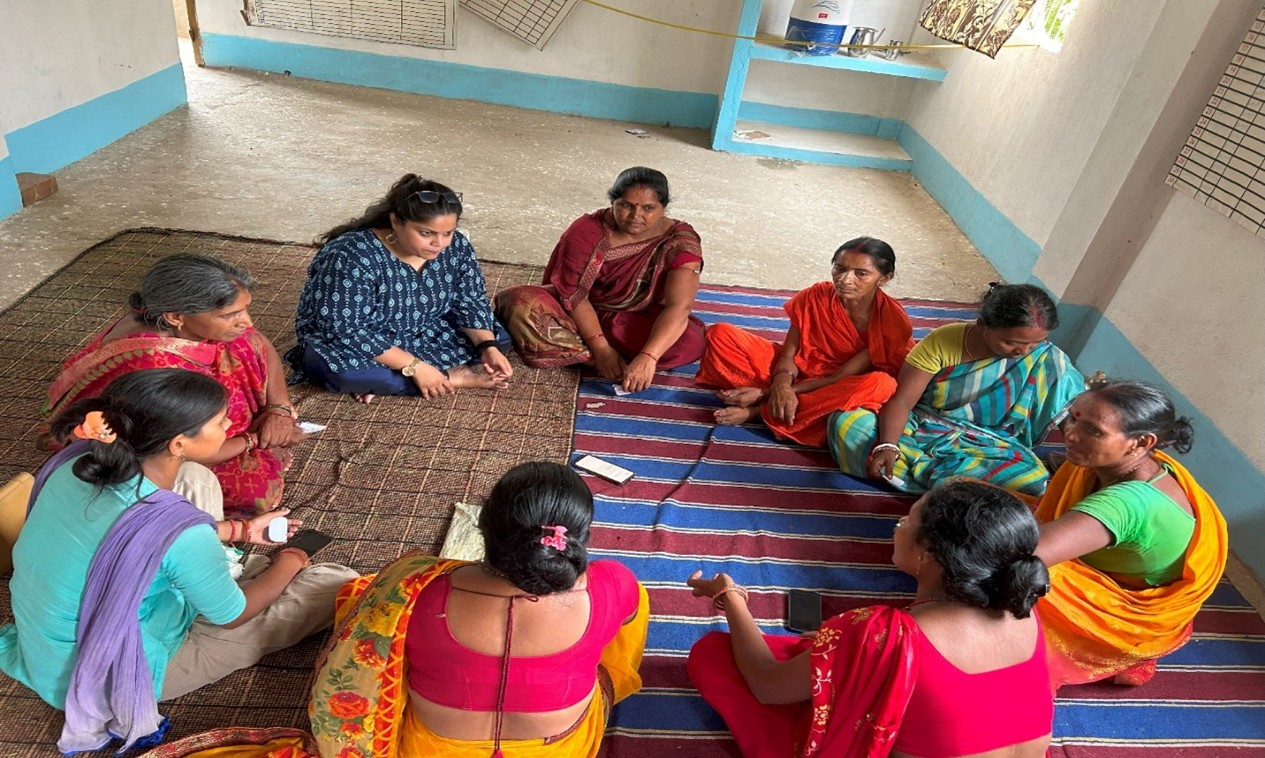
Direct-seeded rice (DSR) is gaining popularity in India, particularly in the Eastern Gangetic Plain, to enhance resource use efficiency, especially water use efficiency, while reducing greenhouse gas emissions. Unlike traditional methods, DSR eliminates the need for transplanting rice seedlings, thus lowering water consumption and reducing labor costs. Currently, rice breeding programs focus on developing varieties suited for direct seeding in both wet and dry soil conditions. However, understanding the gender-specific trait preferences for DSR is essential to align breeding efforts with the needs of male and female farmers.
A recent study conducted in Bihar, located in the Eastern Gangetic Plain, explored gendered trait preferences for DSR using a participatory approach. The research aimed to uncover how male and female farmers prioritize different characteristics in rice varieties when cultivated under DSR systems. The study employed a free card-sorting methodology combined with focus group discussions to allow participants to express their preferences without a predefined setting criteria other than the importance of traits for DSR.

The focus group discussions provided valuable insights into how male and female farmers perceive DSR technology. During the discussions, farmers engaged in a trait card-sorting exercise, which helped them sort various characteristics of rice based on their perceived importance to farmers. The findings revealed that while many traits are valued by both genders, there are nuanced differences in preferences.
Key findings:
- Heterogeneous trait preferences: The study found that male and female farmers have diverse priorities when selecting traits. However, when forced to limit their choices, the differences between genders became less pronounced.
- Common priorities: Both male and female farmers emphasized the importance of traits related to field conditions, such as resistance to pests and tolerance to environmental stresses such as heat and cold. Reducing labor intensity and lowering production costs were also significant factors for both genders, making DSR a favorable option compared to traditional transplanting methods.
- Gender-specific preferences: One notable difference was that women were more likely to prioritize traits related to cooking quality, such as the ability of rice to retain moisture and stay fresh longer after cooking. This trait was less emphasized by male farmers but is essential for women, who are typically responsible for household food preparation.
The study highlights the need for gender-sensitive and gender-intentional breeding programs that consider the preferences of both male and female farmers. By understanding these nuances, rice breeders can develop DSR varieties that align with the needs of diverse stakeholders, ultimately promoting the adoption of sustainable agricultural practices in Bihar and beyond.

Conclusion
As DSR continues to be promoted as a climate-smart agriculture strategy, it is crucial to incorporate gender perspectives in the development of new rice varieties. Addressing the unique needs of male and female farmers will not only improve adoption rates but enhance food security and resource efficiency in the region. Traits such as retrogradation, rancidity or spoilage, amylose content, and water retention will need to be looked at to ascertain which one could be used to prolong the freshness after cooking.